Making Incense, Vietnam
Incense is part of daily life in Vietnam. Joss sticks are offered at the altars which grace every business and almost every home, sold by the kilo in little stores and even (in some parts) burnt against mosquitos.
Now, there are not many places on this planet where a passing nine-year-old boy would be welcomed into a factory, given the tour, and then provided with his own workstation to get to grips with incense manufacture. But Vietnam is one. And the sheer kindness of all the craftspeople we met yesterday, with nary a hard sell or tour group in sight, was truly wonderful.

We took a bike (with a driver — I’ve seen two motorbike crashes in as many days) from Hanoi into the countryside yesterday, to see conical hats and incense being made, something Z had really hoped to see back on our visit to Hue earlier in the year. We drove past bullock carts and motorbikes laden with fresh cut rice, through rural byways over carpets of golden husks drying in the sun, watching women in pajamas and conical hats cutting grown rice as others prepare the wet season, until we arrived at Chuong village.
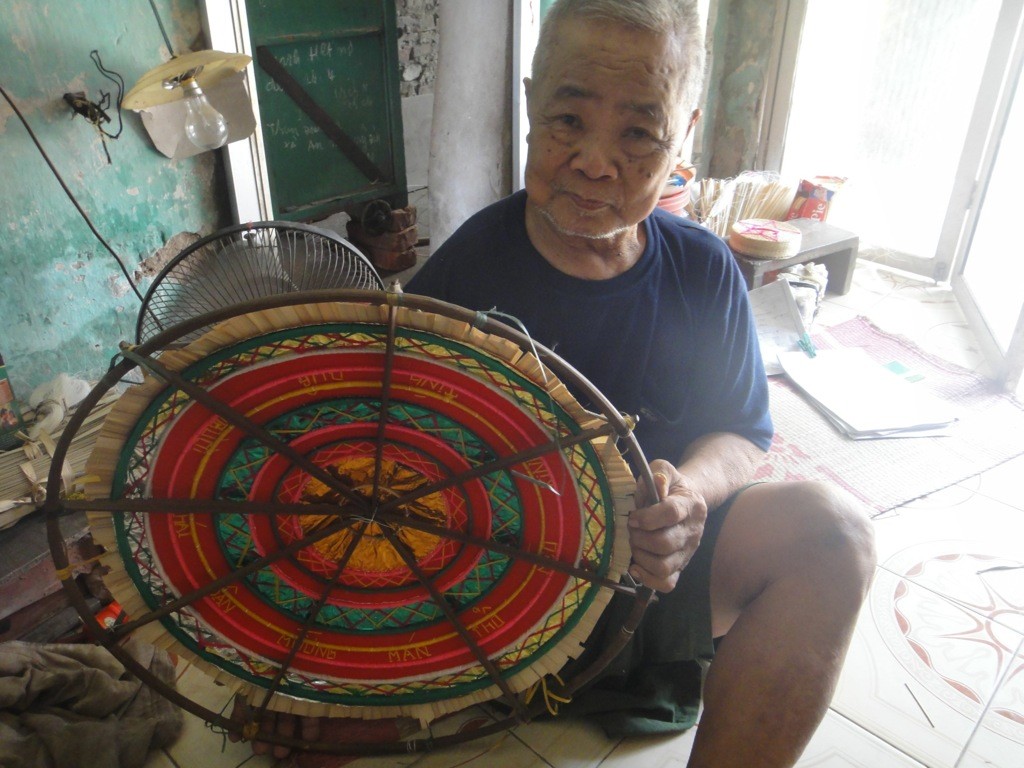 This gentleman, a veteran of the war against the French, single-handedly revived the craft of making elaborate, traditional conical hats after he lost a limb in the war. He works with thread, bamboo, and the leaves of a type of palm tree (cured by sun-drying, soaking and sulphur) to produce eight different types of the traditional Asian headgear once so disparagingly known as coolie hats.
This gentleman, a veteran of the war against the French, single-handedly revived the craft of making elaborate, traditional conical hats after he lost a limb in the war. He works with thread, bamboo, and the leaves of a type of palm tree (cured by sun-drying, soaking and sulphur) to produce eight different types of the traditional Asian headgear once so disparagingly known as coolie hats.
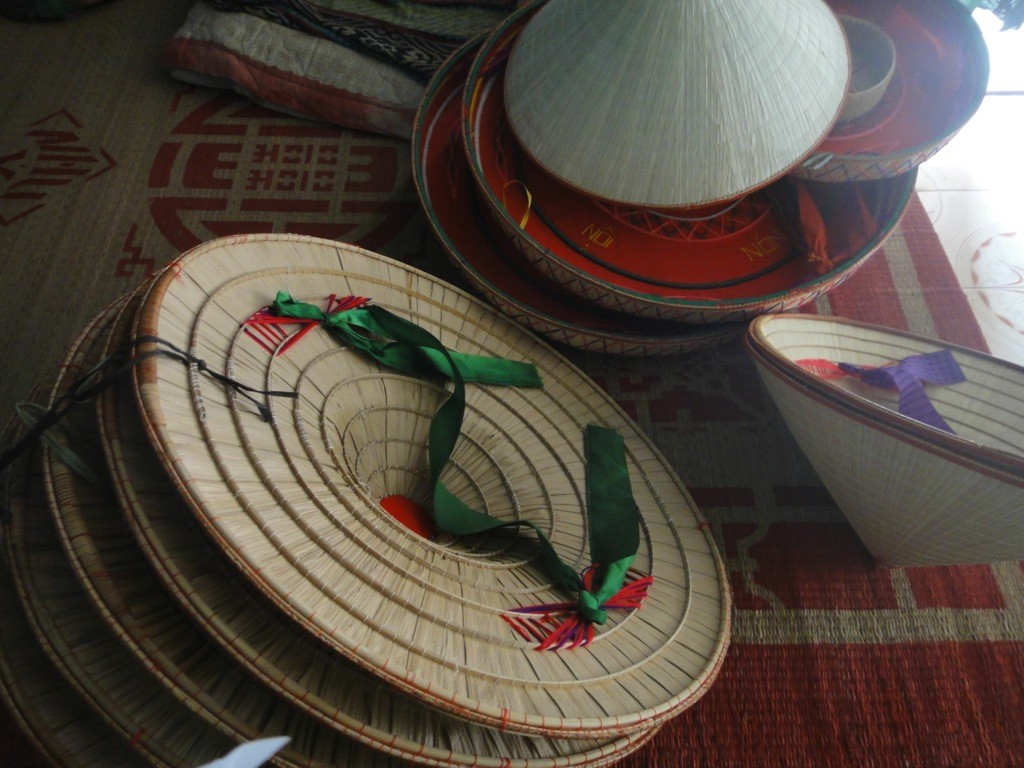
Meandering through the countryside in search of incense makers, we dropped in on this lady, who was making baskets.
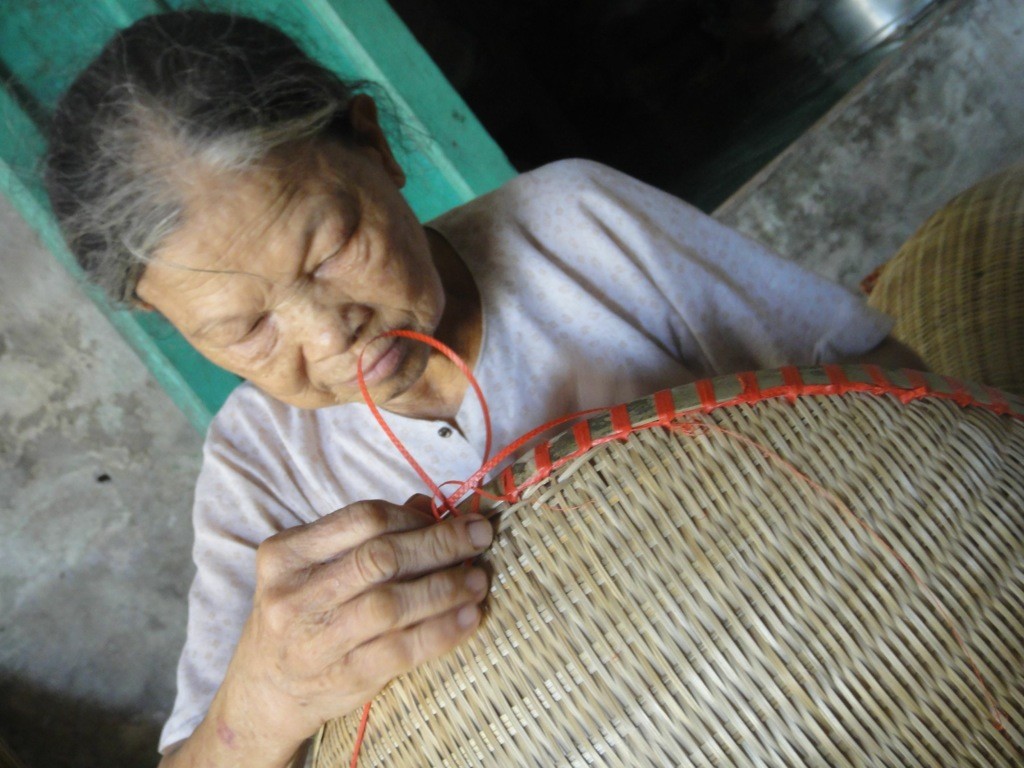
As in most of South-East Asia, staring is completely socially acceptable in Vietnam. This has its downsides, as when one is endeavouring to answer emails only to be surrounded by a curious crowd. But, when it comes to crafts, nothing beats just being able to wander up onto someone’s front porch and sit cross-legged staring at them until it’s time to go. Particularly not when it’s someone whose hands work with the fluency and speed of many decades’ practice.
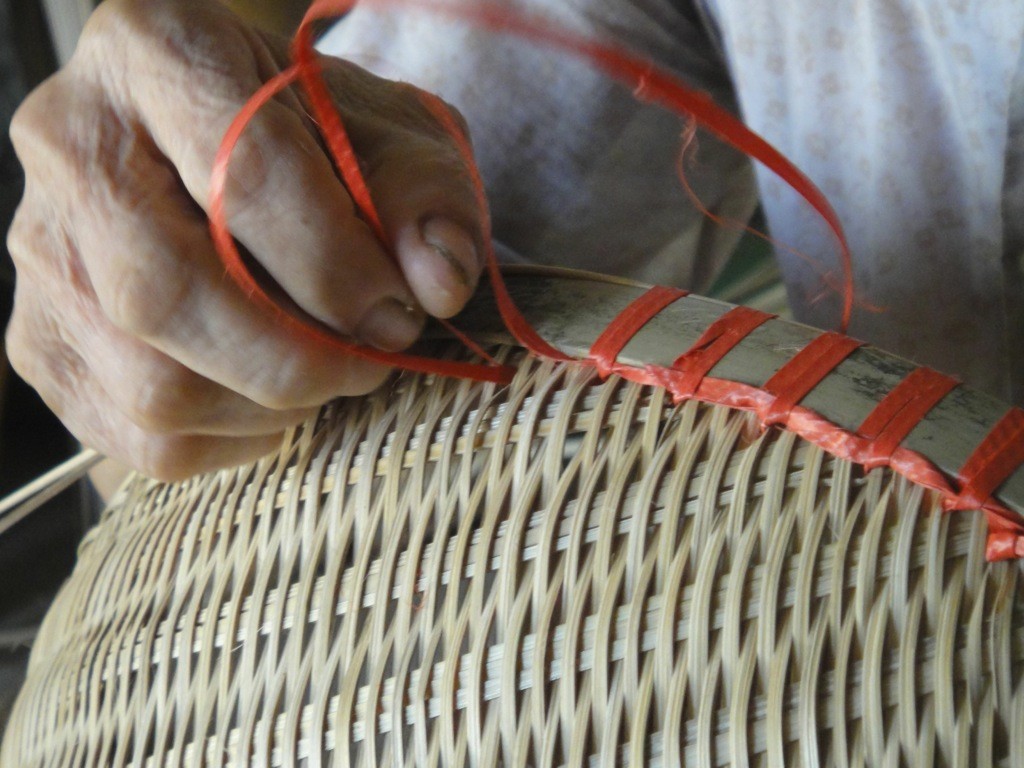
And, finally, we made it to the incense factory. Well, technically, two. In the first, a largely female workforce, assisted by some machines, were cleaning, sorting and splitting bamboo for the slender sticks which form the base of the incense. It’s a process still done by hand in many rural households at this time of year. As here, at the roadside:
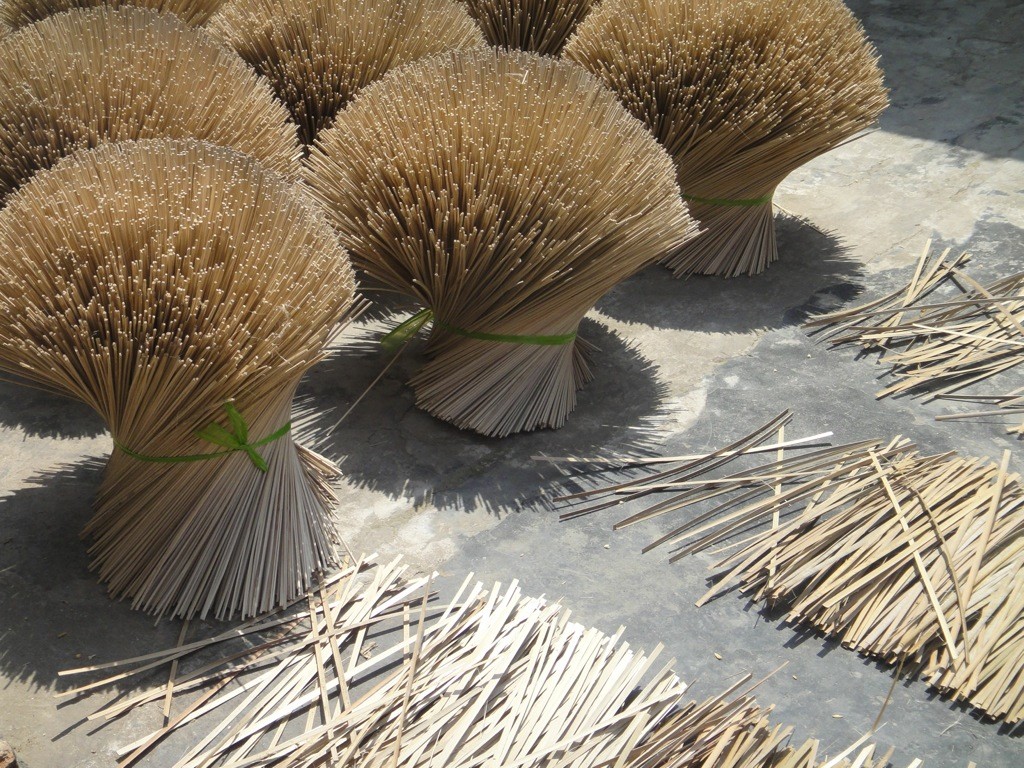
At the second, the bark for incense is aged, chopped and heated. Oil is added, then the mixture is passed onto the bamboo sticks, and they are left to dry to the grey, slightly powdery joss sticks we’d recognise in the west.
Z was fascinated. Totally enthralled. And, because he was so curious about what was going on, the forewoman, a lovely middle-aged lady, set him up on a workstation with a young guy to keep an eye on him, and let him work the machines. You can watch the video here:
We have seen and done some amazing things on our journey so far: navigated down the Mekong, explored Angkor Wat and World War II wrecks, trekked the Ho Chi Minh trail, taken a junk round Halong Bay, travelled in style on the roof of a bus and met people from survivors of the Cambodian genocide to Filipino ladyboys. For Z, though, who like many children loves the processes by which things are made, making his own incense is one of the highlights of our trip.

Great story, and lots of excellent photos. Love it.
Ah, thank you. He loved it too… Wasn’t too keen on seeing lacquer, though he loved watching boats and noodles being made.
Jе peux dire que c’est continuellement du plaaisir de vous lire